Scientific Diving in Kongsfjorden, Svalbard, to detect climate-related changes in the kelp forest.
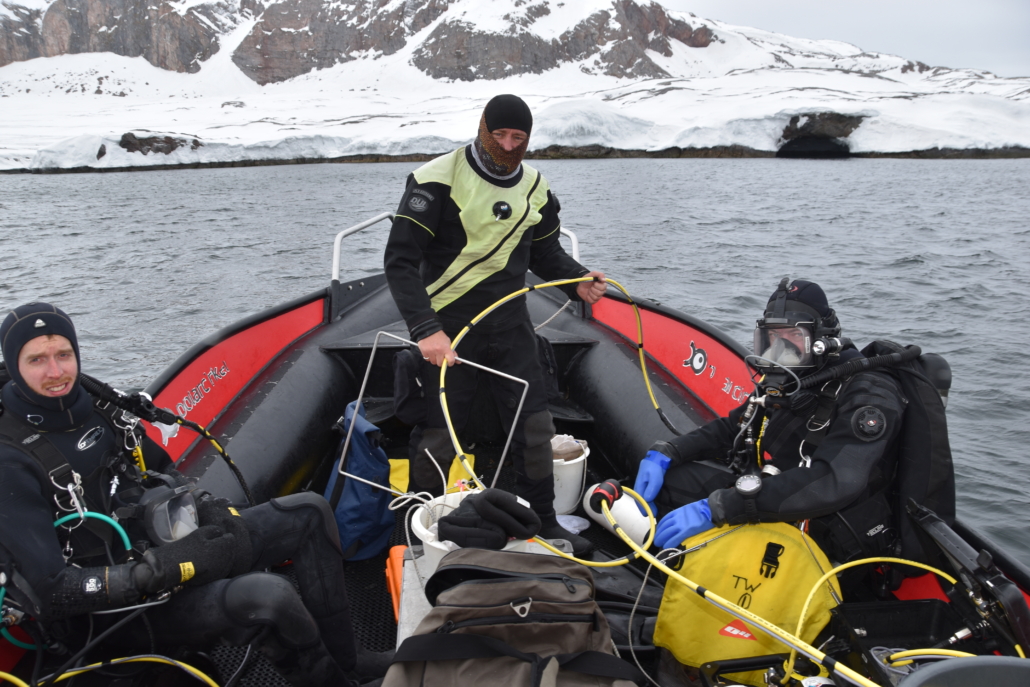
Divers Albert and Kjell Magnus ready, with Thomas who explains what kelp needs to be collected quantitatively within the frames. Foto: Haakon Hop / Norwegian Polar Institute
By Haakon Hop, marine biologist, Norwegian Polar Institute (NPI)
Kelp forests are important parts of the coastal ecosystem in Svalbard, and constitute a considerable part of the carbon budget in glacial fjords, such as Kongsfjorden.
The dominant macroalgal group are the brown seaweeds, which can grow several metres long and support high biodiversity. In Kongsfjorden, seaweeds have expanded and increased in biomass in some areas during the last 30 years since our first dive surveys, because of diminishing sea ice and less ice scouring, particularly in the shallows. However, increased run-off of turbid water from tidewater glaciers has reduced the depth distribution of brown seaweeds because of less light.
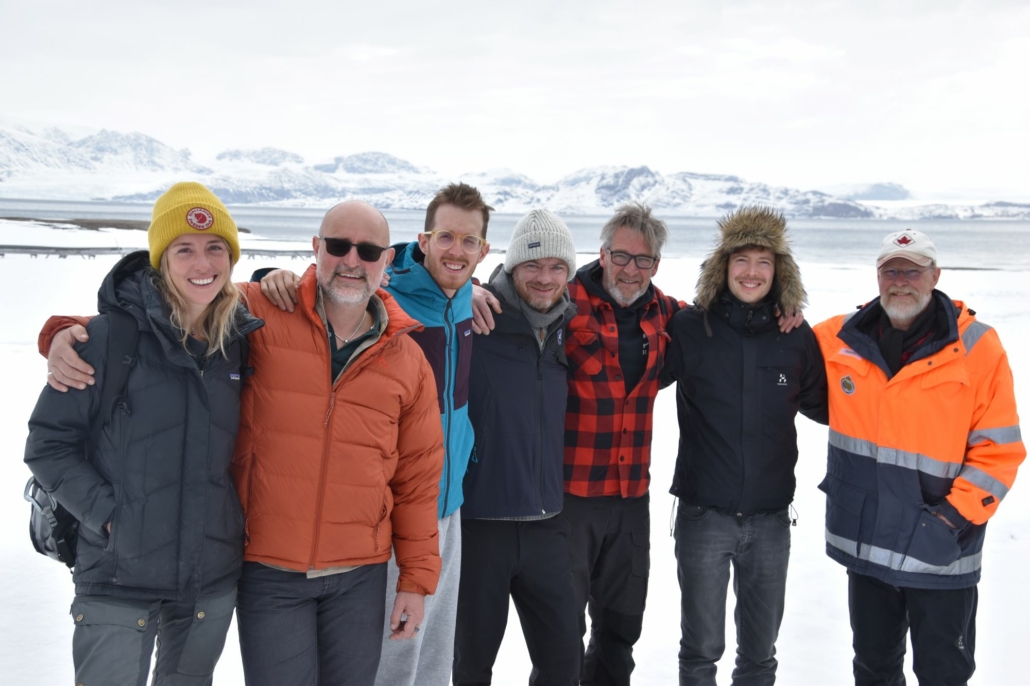
BlueARC team: Taylor Simpkins (UWA), Thomas Wernberg (IMR/UWA), Albert Pessarrodona and Kjell Magnus Norderhaug (IMR), Morten Foldager Pedersen og Jacob Nepper Davidson (Roskilde University), and Haakon Hop (NPI). Photo: Andrey A. Abramov / IPBPSS
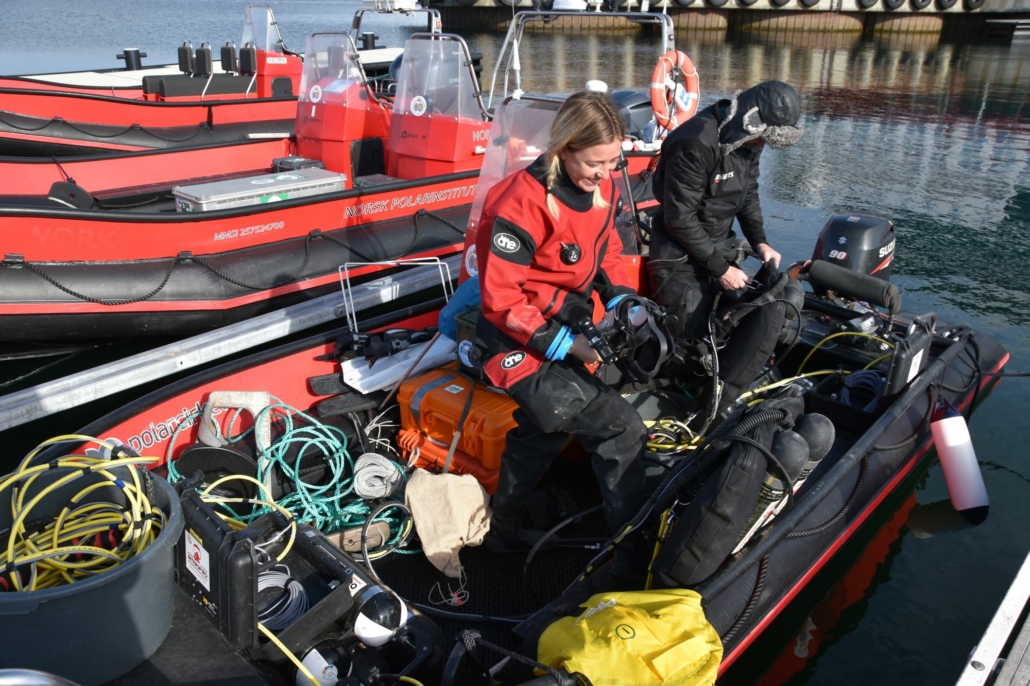
PolarCirkel with lots of dive gear to be organized by Taylor and Kjell Magnus. Photo: Haakon Hop / Norwegian Polar Institute
The kelp research in Kongsfjorden is part of a larger pan-Arctic study, BlueARC, funded by the Research Council of Norway. The project is led by Karen Filbee-Dexter, Institute of Marine Research (IMR), Norway, and aims to determine how efficient Arctic kelps are in storing carbon dioxide as they grow and what happens to them after they break off and become buried in the sediments, constituting a carbon sink.
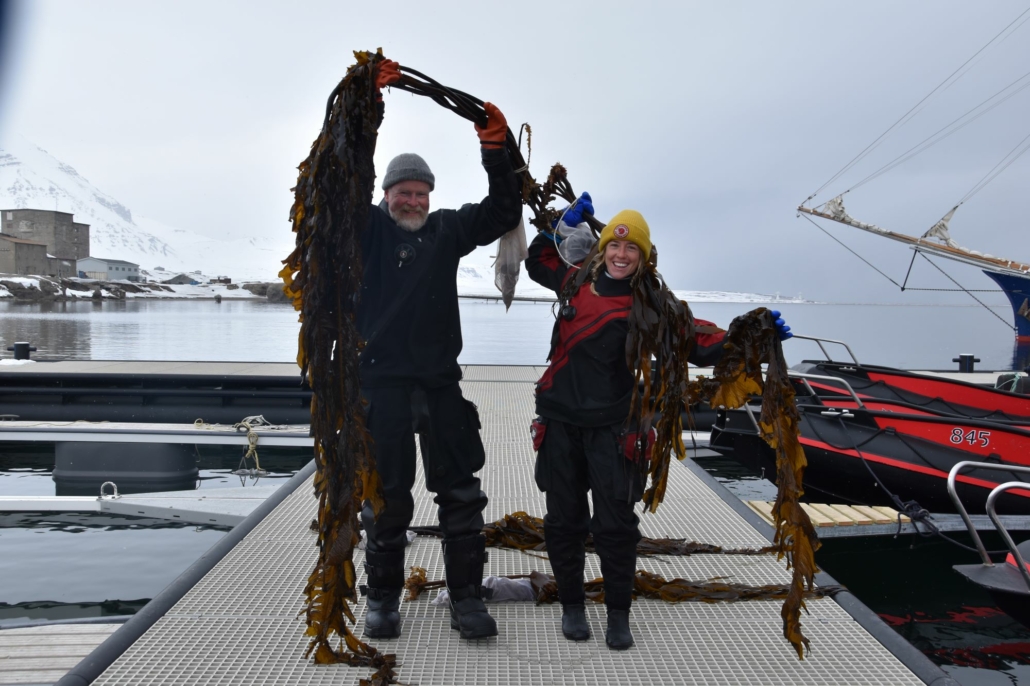
The winged kelp Alaria esculenta. Haakon and Taylor displaying some large individuals. The forests in Svalbard are underwater! Photo: Lonnie Mikkelsen / Norwegian Polar Institute
These underwater surveys can only be done by scientific divers recoding and collecting the kelp at different locations around the fjord. The dive team was led by Haakon Hop (Norwegian Polar Institute), and Kjell Magnus Norderhaug (IMR), and included IMR and UWA scientific divers Thomas Wernberg, Albert Pessarrodona, and Taylor Simpkins. When macroalgae had been collected they were brought back to Kings Bay Marine Laboratory for identification and processing, with carbon, age and genetic analyses led by researchers Morten Foldager Pedersen and Jacob Nepper-Davidsen, from Roskilde University in Denmark.
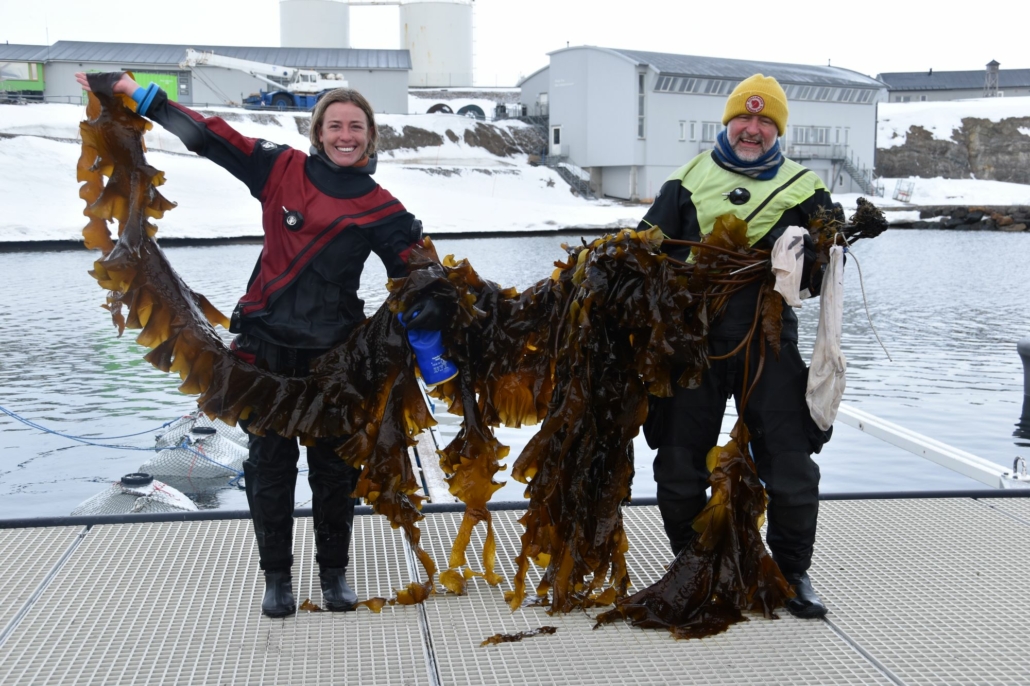
The sugar kelp Saccharina latissima can be several metres long, as displayed by Taylor and Thomas. This kelp species has been almost completely grazed down by sea urchins on the coast of Northern Norway. The outer part of Kongsfjorden is currently also occupied by high densities of sea urchins. Photo: Haakon Hop / Norwegian Polar Institute
Kelp forests may be growing better in the Arctic because of sea-ice loss, but there are also threats out there such as sea urchins. On the northern Norwegian coast sea urchins have grazed down much of the kelp forest. This year we observed hordes of sea urchins at the outer dive location, Kapp Mitra – which suggests Arctic kelp forests may be vulnerable to overgrazing as well. Svalbard’s coastal zone is changing rapidly with climate change, and diving-based research projects like BlueARC are essential to understand the consequences of these changes on Norway’s unique High Arctic marine ecosystem!
The Blue ARC project aims to put Norway at the front on research and understanding of the climate changes happening to our kelp forests in northern habitats.
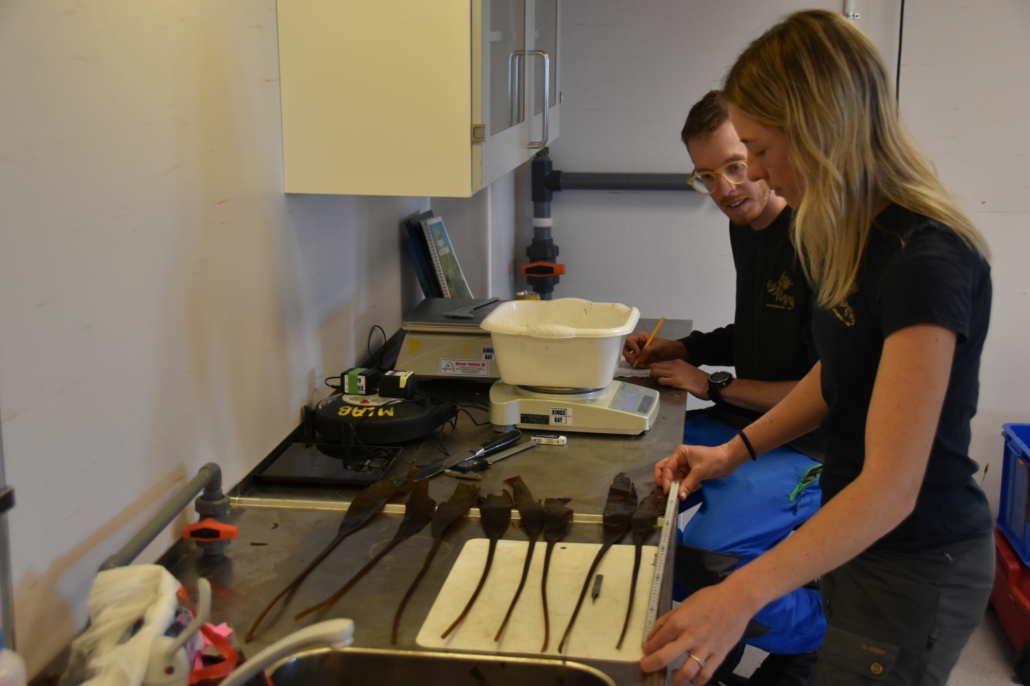
Collected Saccorhiza dermatodea measured in the Marine laboratory in Ny-Ålesund, here with Taylor and Albert in action. Foto: Haakon Hop / Norwegian Polar Institute




